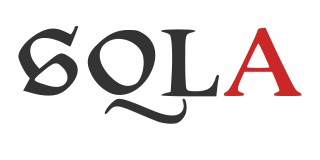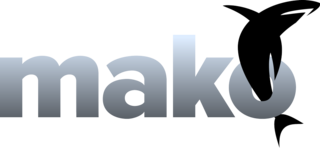The Web Server Gateway Interface is a simple calling convention for web servers to forward requests to web applications or frameworks written in the Python programming language. The current version of WSGI, version 1.0.1, is specified in Python Enhancement Proposal (PEP) 3333.
In computing, a solution stack or software stack is a set of software subsystems or components needed to create a complete platform such that no additional software is needed to support applications. Applications are said to "run on" or "run on top of" the resulting platform.

Django is a free and open-source, Python-based web framework that runs on a web server. It follows the model–template–views (MTV) architectural pattern. It is maintained by the Django Software Foundation (DSF), an independent organization established in the US as a 501(c)(3) non-profit.
A web framework (WF) or web application framework (WAF) is a software framework that is designed to support the development of web applications including web services, web resources, and web APIs. Web frameworks provide a standard way to build and deploy web applications on the World Wide Web. Web frameworks aim to automate the overhead associated with common activities performed in web development. For example, many web frameworks provide libraries for database access, templating frameworks, and session management, and they often promote code reuse. Although they often target development of dynamic web sites, they are also applicable to static websites.

TurboGears is a Python web application framework consisting of several WSGI components such as WebOb, SQLAlchemy, Kajiki template language and Repoze.
SQLObject is a Python object-relational mapper between a SQL database and Python objects. It is experiencing community popularity, and forms a part of many applications. It is very similar to Ruby on Rails' ActiveRecord in operation in that it uses class definitions to form table schemas, and utilizes the language's reflection and dynamism to be useful.
Genshi is a template engine for XML-based vocabularies written in Python. Genshi is used to easily insert generated output into XML-based languages, usually HTML, and reuse elements between documents. Genshi's syntax is based on Kid, but its architecture is different. Genshi aims to implement some of its functionality while processing templates faster, by dynamically processing templates using a stream based API, instead of compiling templates to Python code.

SQLAlchemy is an open-source Python library that provides an SQL toolkit and an Object Relational Mapper (ORM) for database interactions. It allows developers to work with databases using Python objects, enabling efficient and flexible database access.
Roundup is an open-source issue or bug tracking system featuring a command-line, web and e-mail interface. It is written in Python and designed to be highly customizable.
Python Paste, often simply called paste, is a set of utilities for web development in Python. Paste has been described as "a framework for web frameworks".

Google App Engine is a cloud computing platform used as a service for developing and hosting web applications. Applications are sandboxed and run across multiple Google-managed servers. GAE supports automatic scaling for web applications, allocating more resources to the web application as the amount of requests increases. It was released as a preview in April 2008 and launched officially in September 2011.
Web2py is an open-source web application framework written in the Python programming language. Web2py allows web developers to program dynamic web content using Python. Web2py is designed to help reduce tedious web development tasks, such as developing web forms from scratch, although a web developer may build a form from scratch if required.

Flask is a micro web framework written in Python. It is classified as a microframework because it does not require particular tools or libraries. It has no database abstraction layer, form validation, or any other components where pre-existing third-party libraries provide common functions. However, Flask supports extensions that can add application features as if they were implemented in Flask itself. Extensions exist for object-relational mappers, form validation, upload handling, various open authentication technologies and several common framework related tools.
Pylons Project is an open-source organization that develops a set of web application technologies written in Python. Initially the project was a single web framework called Pylons, but after the merger with the repoze.bfg framework under the new name Pyramid, the Pylons Project now consists of multiple related web application technologies.
Cubes is a light-weight open source multidimensional modelling and OLAP toolkit for development reporting applications and browsing of aggregated data written in Python programming language released under the MIT License.

Jam.py is free and open-source low-code/no-code "full stack" WSGI rapid application development framework for the JavaScript and Python programming language.

Mako is a template library written in Python. Mako is an embedded Python language, which refines the familiar ideas of componentized layout and inheritance. The Mako template is used by Reddit. It is the default template language included with the Pylons and Pyramid web frameworks.






